If You Were to Ride the Tour de France Route – Part 1
The land that gave birth to the world’s greatest cycling race is endlessly cyclist-friendly.
The Tour de France, a race that circles around France by bicycle over the course of 23 days in the peak of summer, is in full swing from July 5 to 27. The country and people that gave rise to such a grand sporting event share a deep love for cycling. In recent years, France has rapidly developed cycling infrastructure to promote eco-friendly transportation. As one of the world’s top tourist destinations, the nation is now fully committed to advancing cycle tourism.
A journalist with 30 years of experience covering the Tour de France witnesses this dedication firsthand. In this two-part series, Part 1 offers a preview of the 2025 Tour de France and essential tips for cycling in France.
Table of Contents
1. Highlights of the 2025 Tour de France
2. Riding the Stages of the Tour de France
3. Let’s Ride to Mont-Saint-Michel!
1. Highlights of the 2025 Tour de France
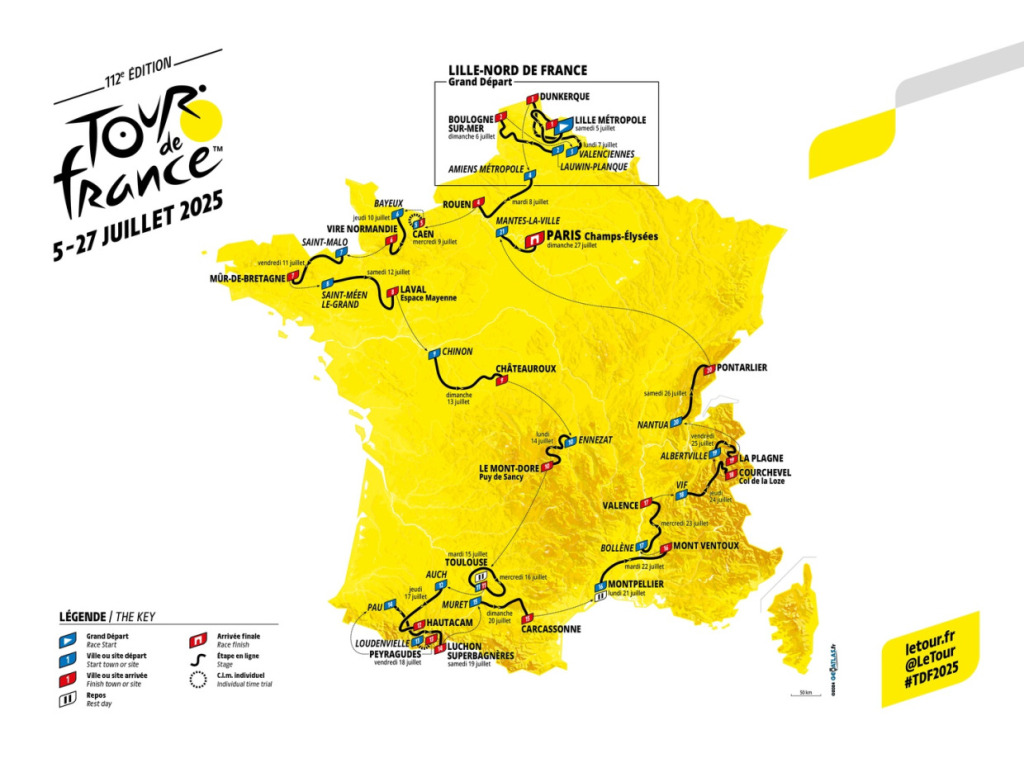
The route of the 112th Tour de France in 2025 roughly traces the outline of France’s hexagonal shape, much like it did during the early days of the race a century ago. The challenging Pyrenees come in the first half, with the Alps in the latter. The biggest battleground is Stage 16, featuring Mont Ventoux in Provence—a mountain feared as “The Mountain Where the Devil Lives.”
The total distance is 3,338.8 km, including two individual time trials. While the first rest day usually falls on Day 10, this year it will be pushed to Day 11 to avoid coinciding with Bastille Day on July 14. Riders will thus tackle the first 10 stages without a break. There are 26 key mountain passes that could shape the battle for overall victory: 8 in the Massif Central, 8 in the Pyrenees, 9 in the Alps, and 1 in the Jura. Each region also features summit finishes where time gaps are likely to form.
A total of 23 teams are participating, each consisting of 8 riders, making for 184 cyclists in all. The top favorite for victory is Tadej Pogačar of UAE Team Emirates-XRG from Slovenia, aiming for his fourth overall win—and second in a row. His main rival is Jonas Vingegaard of Team Visma–Lease a Bike from Denmark, the overall winner in both 2022 and 2023.
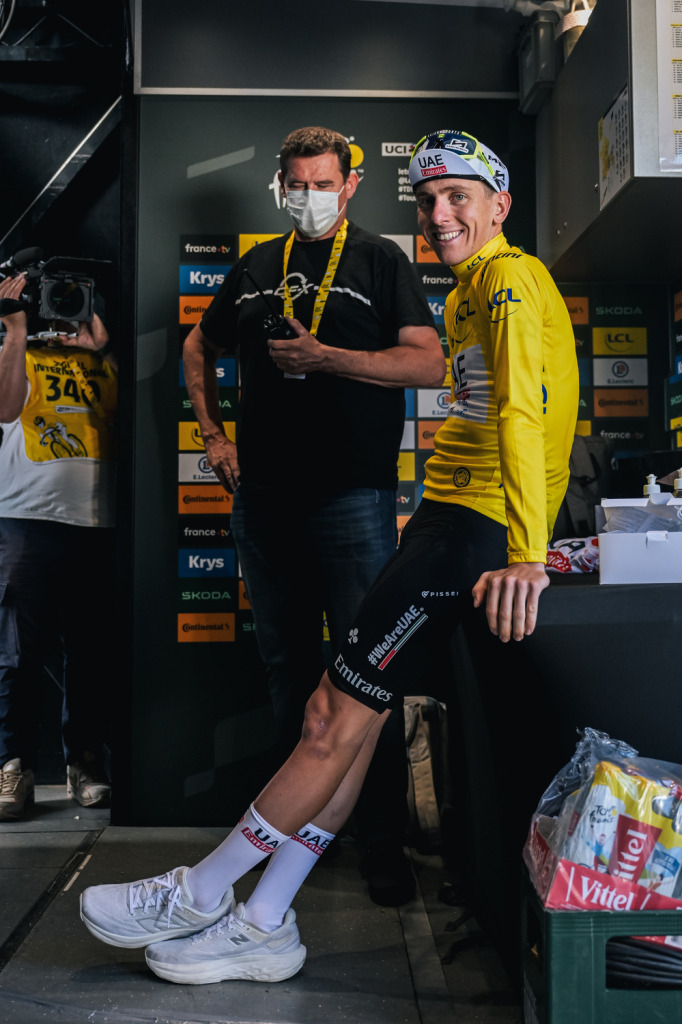
An intriguing aspect of this year’s race is that both Tadej Pogačar and Jonas Vingegaard will be supported by British twin brothers: Adam Yates for Pogačar and Simon Yates for Vingegaard. Adam, the younger twin, was the Best Young Rider at the 2016 Tour de France, while his older brother Simon is the overall winner of the 2018 Vuelta a España and, more recently, the 2024 Giro d’Italia in May. Either rider would be a team leader in most other squads.
There are other riders worth watching. Remco Evenepoel of Soudal–Quick-Step (Belgium), who finished third overall last year, is coming off a strong showing at the Paris Olympics with two gold medals. At 25, he is the youngest among the top contenders. Another fan favorite in Japan, Primož Roglič of Red Bull–Bora–Hansgrohe (Slovenia), is aiming for his long-awaited first Tour de France victory. Back in 2020, he was on the brink of winning the overall title, only to be overtaken by his compatriot Pogačar on the penultimate day.
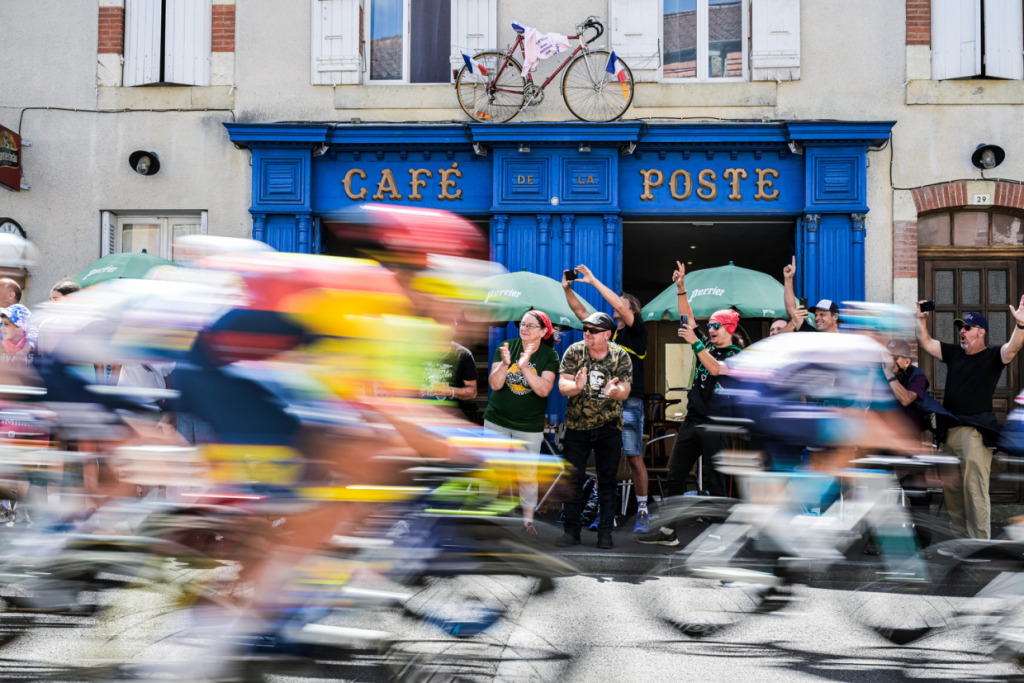
Last year, due to the Paris Olympics, the Tour did not finish in the capital for the first time in history. This year, however, it returns to Paris. Marking the 50th anniversary of the Champs-Élysées as the traditional finish line, the final stage will not be the usual parade-style circuit race. Instead, riders will first tackle the steep climb of Montmartre before heading to the Champs-Élysées for the finish.
If the time gaps remain tight up to the penultimate day, there’s a real possibility of a fierce battle unfolding right at the very end. In any case, it promises to be an exciting 23 days.
2. Riding the Stages of the Tour de France
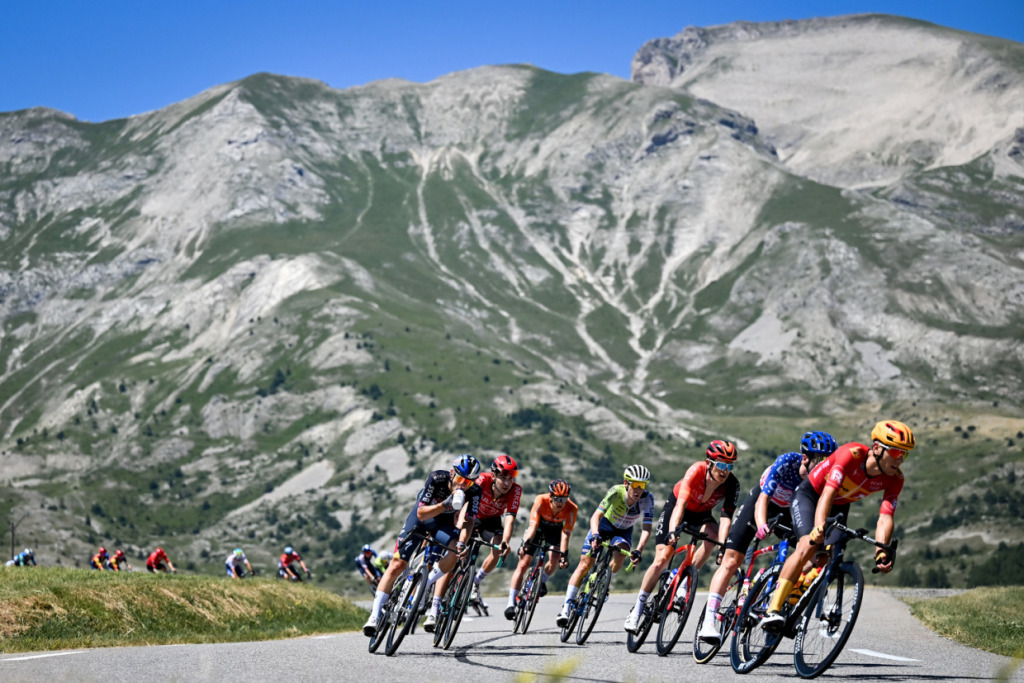
In 2025, I’ll be heading out for my 30th on-site coverage of the Tour de France. This year’s Grand Départ—the official start of the race—will take place in Hauts-de-France, the northernmost region of the country. The first four stages will begin in the regional city of Lille and continue through scenic destinations such as Boulogne-sur-Mer, Dunkirk, and Amiens.
From coastal roads and rolling hills to pastoral landscapes, port towns, and Gothic cathedrals, the diverse scenery unique to northern France will be broadcast to viewers around the world.
Stage 1 (July 5) | Loop Course Starting and Finishing in Lille
Designed for sprinters, this stage is a loop course passing through Reims, Béthune, Cassel, and other towns. The starting point, Lille, is a historic city lined with Flemish-style buildings.

Recommended Cycling Course:
“L’Échappée Bière,” a specialty tour company that offers brewery tours, runs a full-day cycling tour around breweries near Lille. Starting from the old town, the route follows the lush Deûle Canal and visits three breweries, where participants can interact with the producers and enjoy tastings. The total distance is approximately 37.5 km.
Stage 2 (July 6) | Roubaix–Boulogne-sur-Mer
Starting from Roubaix, this hilly stage follows a coastal route overlooking the English Channel and features four climbs. The finish is in Boulogne-sur-Mer, a fortified seaside town.
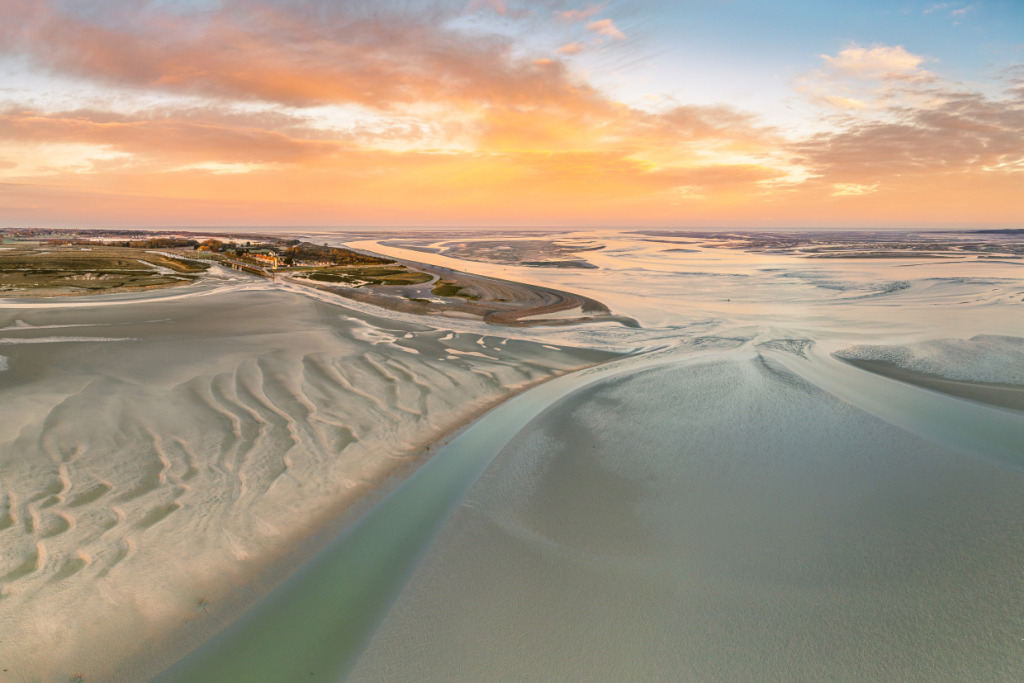
Recommended Cycling Route:
Opened in 2021, the Vélomaritime is part of EuroVelo 4, a 1,500 km cycling route connecting northern France, Normandy, and Brittany. It runs along the North Sea, the English Channel, and the Atlantic Ocean, offering a diverse and scenic coastal experience.
The route passes through Boulogne-sur-Mer, providing a perfect opportunity to enjoy both the coastline and the town by bike. From Boulogne northward to Wimereux, dedicated cycling lanes allow for a refreshing ride with beautiful sea views.
Stage 3 (July 7) | Valenciennes – Dunkirk
A flat 178.3 km stage where coastal winds play a strategic role. The finish is in Dunkirk, a historic city known for its significance in World War II.
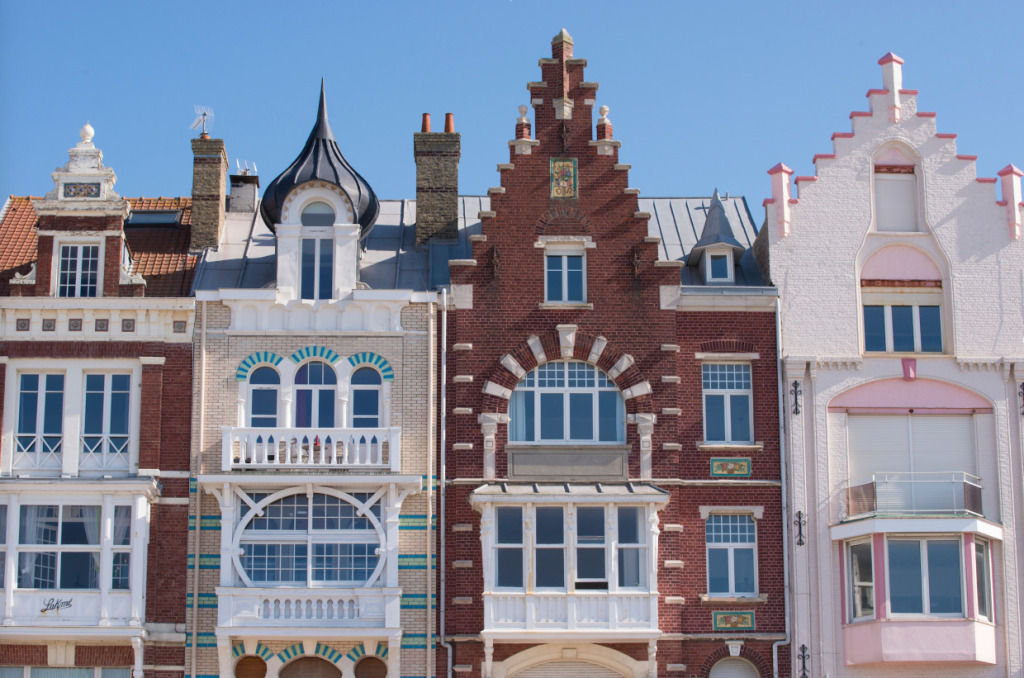
Recommended Cycling Route:
The promenade at Malo-les-Bains is one of the most iconic sections of the Vélomaritime. Cycling along Malo-les-Bains Beach, you can enjoy a wide boardwalk, historic villa architecture, and lively streets lined with restaurants and cafés.
Additionally, a cycling trip through French Flanders from Lille to Dunkirk (via Saint-Omer) is highly recommended. Offered by the specialist tour operator Ch’ti Voyages à Vélo, this is a 5-day, 4-night itinerary that allows you to fully savor the region’s charm.
Stage 4 (July 8) | Amiens – Rouen
The final stage of the Hauts-de-France region in the Tour de France. Starting from Amiens, known for its cathedral, the route heads toward Rouen in Normandy.
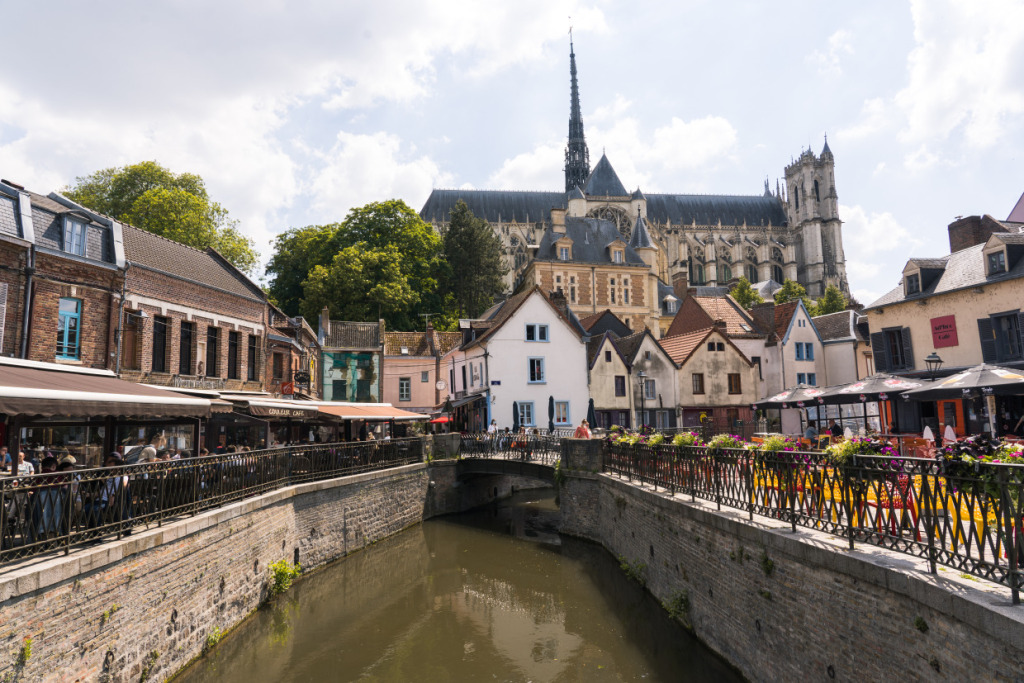
Recommended Cycling Route:
Amiens, known as the “Venice of the North,” is a beautiful city featuring the floating water gardens called the Hortillonnages, which span approximately 300 hectares and have existed since medieval times. These gardens continue to play an important role in supplying the city with flowers and vegetables.
Today, the Hortillonnages consist of active farms and over 1,000 private gardens, making them a must-see attraction for visitors to Amiens. Cycling along the quiet paths beside the waterways, you can pass under small huts and arched bridges, observing gardeners working peacefully surrounded by greenery.
For those wanting a longer ride, the Somme Valley Cycling Route follows the Somme River from Amiens to Ailly-sur-Somme. This route along the towpath offers an enjoyable journey through rich natural landscapes.
3. Let’s Ride to Mont-Saint-Michel!
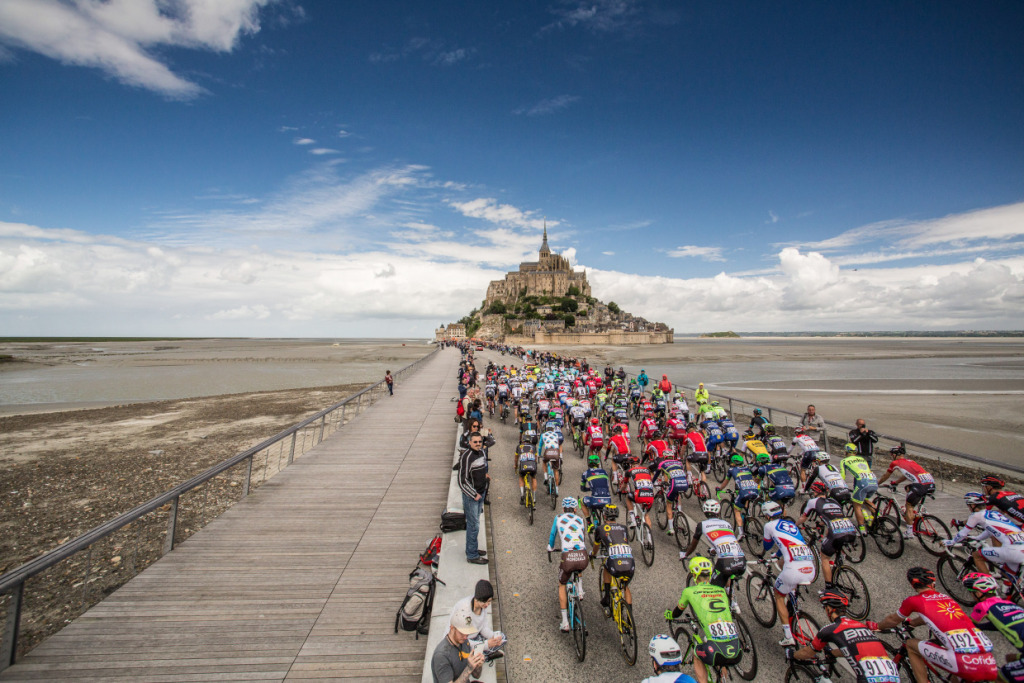
The Tour de France, which began in northern France, circles the country counterclockwise, moving its stage to the Normandy region. This area is relatively accessible from Paris and is home to the famous tourist attraction familiar even to Japanese visitors—Mont-Saint-Michel. In fact, there is a French-recommended cycling route called “La Véloscénie” that connects Paris to Mont-Saint-Michel.
For those new to cycling, it’s fine to take a train or rent a car to Mont-Saint-Michel and use a hotel there as a base for rides. However, this might feel somewhat limited for more avid cyclists. Riding a bike all the way from Paris to Mont-Saint-Michel is quite a unique approach, offering experiences that can only be encountered by cycling.
About Bike Transport and Bike Rentals in France→
“To You Traveling in France: Hello to Bike Transport & Rental Bikes”
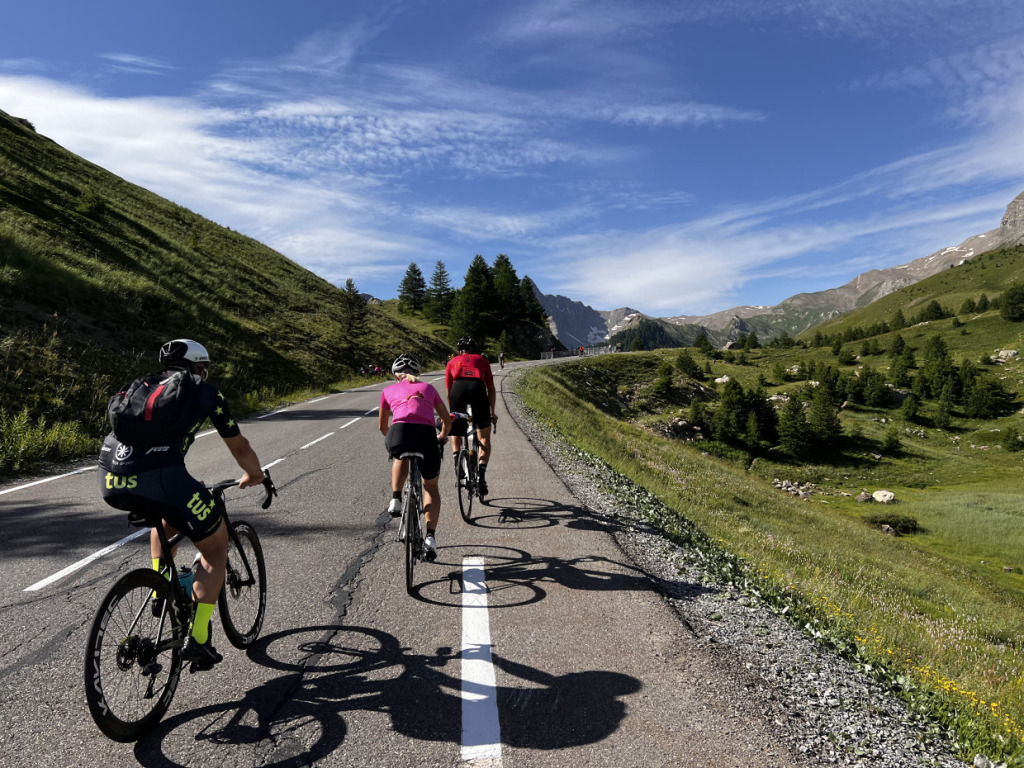
La Véloscénie runs from Notre-Dame Cathedral in the heart of Paris to the UNESCO World Heritage site of Mont-Saint-Michel, crossing four regions, eight departments, and three regional natural parks. Stretching over 450 km, it is the newest of France’s major cycling routes, offering sights not only of the Eiffel Tower but also the Palace of Versailles and Chartres Cathedral.
A key feature of the route is that most of it consists of dedicated cycling paths. There are 130 km of bike-only “Voies Vertes” (greenways) and 200 km of “Voies Partagées” (shared paths) that are used by cars and motorcycles but have very low traffic, making them safe for cyclists. The route is well signposted throughout.
Completion of the entire route is not required, as it is divided into eight major sections according to difficulty, allowing cyclists to choose segments that suit their schedule and goals.
In the second part, I seriously planned a cycling itinerary as if I were going there myself. The most important factor is route selection, followed by finding bike-friendly accommodations. Also, unlike Japan, there are no vending machines or convenience stores along the way, so these environmental differences need to be considered.
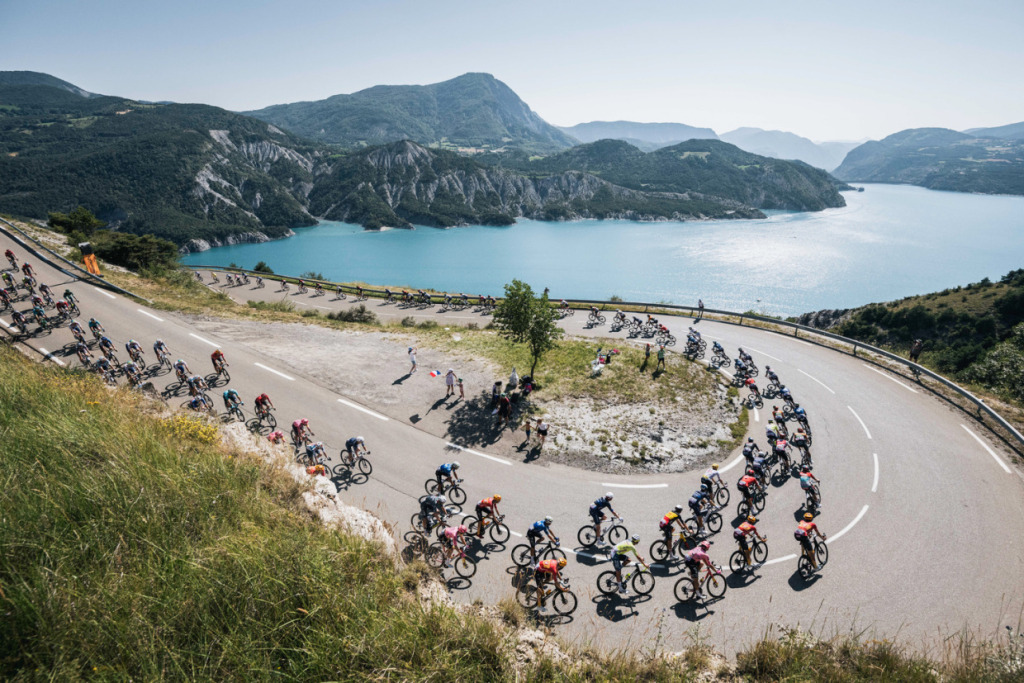
The Tour de France must now be entering its final stages, with the crucial Stage 16 finish at Mont Ventoux sure to have a major impact on the overall victory. Taking advantage of this opportunity, let’s plan as if we were going to ride this iconic mountain in Provence ourselves.
*Part 2 is here.
Text_Kazuyuki Yamaguchi
Profile
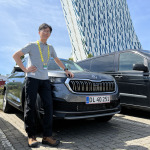
Kazuyuki Yamaguchi
A sports journalist with 30 years of experience covering the Tour de France. In addition to cycling, he has covered table tennis, track and field, rowing, and others, contributing articles to Tokyo Chunichi Sports among others. He has served in public relations roles for international cycling events held in Japan. His works include ‘Shimano: The Bicycle Parts that Conquered the World – From a Small Sakai Workshop to Global Standards’ (Koubunsha) and ‘Tour de France’ (Kodansha Modern New Books), both available as e-books. He studied French literature at Aoyama Gakuin University’s Faculty of Literature.